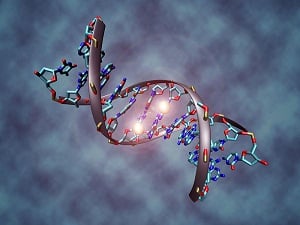Genome editing used to be a long, laborious, and expensive process that, for quite a long time, you’d have been forgiven for thinking only worked on mice. In the earlier days, making a single genomic modification on a target organism could take a year or so and may have cost up to several hundreds of thousands of dollars to complete. Thankfully, these limitations were addressed with the development of powerful alternative bioengineering technologies, namely ZFN, TALENs, and CRISPR.
Understanding the Differences between ZFNs, TALENs, and CRISPR
ZFNs, or zinc finger nucleases, were the first custom DNA endonucleases used to specifically recognize and cleave target DNA. Each zinc finger is typically made up of approximately 30 amino acid modules and is capable of recognizing 3 to 6 nucleotide bases.
Since ZFN is a heterodimer (it is composed of a zinc finger domain and a Fok1 endonuclease domain), the endonuclease domain must dimerize before it can create a double-strand break in the DNA. However, this automatically happens as it recognizes the binding site. The Fok1 nucleases are also activated at this point.
After cleavage, the cell then tries to repair the breakage, either through non-homologous end joining (NHEJ) wherein it seals the two ends of the DNA back together, or via homology-directed repair wherein it uses a copy of the gene sequence to fix the break, thereby incorporating the desired sequence into the DNA.
By using a series of linked ZFNs, the researcher can recognize longer DNA sequences and achieve the desired on-target specificity. However, predicting the specificity of the final arrangement can be challenging, since zinc finger motifs aligned in an array are known to influence the specificity of neighboring fingers.
TALENs, or transcription activator-like effector nucleases, are fusion proteins (composed of a bacterial TALE protein and Fok1 endonuclease) whose specificity is derived from protein-DNA association. It is normally comprised of 33 to 35 amino acid modules, each targeting a single nucleotide. Thus, by assembling different TALEN moieties, researchers can recognize any specific DNA sequence they like.
Compared to ZFNs, TALENs are cheaper and produce faster results. They are also more flexible and easier to design due to their well-defined target specificities (the activity of each TALE does not affect the binding specificity of neighboring TALEs). However, both techniques are not limited to mutagenesis in mouse embryonic stem cells and have been successfully used to engineer modifications in several animal and insect species (e.g. zebrafish, rats, livestock, fruit flies, monarch butterflies, and nematodes).
Note: TALEN motifs are also linked with Fok1 endonuclease, so dimerization is required before it can successfully cleave the DNA.
The CRISPR/Cas9 system (which stands for clustered, regularly interspaced, short palindromic repeat/CRISPR associated 9) is an RNA-based bacterial defense mechanism composed of two types of RNA (one being the trans-activating crRNA and a single guide RNA) and Cas9 endonuclease.
While the other two systems are both man-made, the CRISPR/Cas system is derived from bacteria. In nature, the CRISPR system is activated when a virus or foreign pathogen invades a bacterium. With the help of the appropriate Cas proteins, the system captures and cuts a portion of the viral DNA and incorporates it into the CRISPR locus of the bacterial genome.
When the bacterium is attacked by the same virus, the CRISPR loci produce guide RNA (gRNA) which escorts the Cas proteins to the matching target sequence in the viral DNA. The Cas proteins then bind to the target and cleave the viral DNA at a specific location, rendering it inactive.
Compared to ZFNs and TALENs, the CRISPR/Cas9 system is undeniably simpler, cheaper, and more efficient. Notably, the CRISPR/Cas9 system can be designed for any genomic targets and multiplexed by adding multiple gRNAs.






